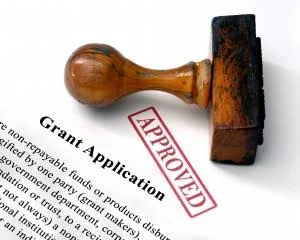Introduction
Free spousal visa in the United States of America for foreigners is one of the most sought-after immigration pathways for individuals who are married to U.S. citizens or lawful permanent residents. Whether you’re newly married or planning to join your partner who already resides in the U.S., understanding how to apply, what it entails, and the benefits that come with it is key to building your future together in America. This guide will walk you through everything you need to know—without the headache of legal jargon—so you can take confident steps toward reuniting with your loved one, and possibly enjoying free processing through special government support and waivers.
What Is a Spousal Visa and Who Qualifies?
A spousal visa allows a foreign-born spouse of a U.S. citizen or lawful permanent resident (green card holder) to legally live and work in the United States. There are two primary categories:
- IR1/CR1 Visa – For spouses of U.S. citizens.
- F2A Visa – For spouses of green card holders.
To qualify:
- Your marriage must be legally recognized in the country where it was performed.
- Both partners must be at least 18 years old and legally capable of marriage.
- The petitioner (U.S. partner) must be either a U.S. citizen or lawful permanent resident.
- You must be able to prove that your relationship is genuine and not solely for immigration benefits.
Can You Really Get a Free Spousal Visa?
The term “free” in this context doesn’t mean there are no official fees involved, but rather that there are legitimate ways to have the costs significantly reduced or waived. Here’s how:
1. Fee Waivers
U.S. Citizenship and Immigration Services (USCIS) allows eligible applicants to request a fee waiver for certain forms, such as:
- Form I-130 (Petition for Alien Relative)
- Form I-485 (Application to Register Permanent Residence)
To qualify, you’ll need to show financial hardship, such as:
- Household income below 150% of the federal poverty level
- Receiving means-tested public benefits like Medicaid or SNAP
2. Nonprofit Sponsorships & Legal Aid
Several nonprofit organizations and immigration clinics help couples by:
- Covering USCIS fees
- Offering free legal support
- Assisting with document preparation
The Application Process: From Love to Legal Status
Let’s walk through the application process step-by-step:
Step 1: File Form I-130 – Petition for Alien Relative
This form is filed by the U.S. spouse to prove a bona fide relationship. You’ll need:
- Marriage certificate
- Proof of legal status of the U.S. spouse
- Passport-sized photos of both partners
- Evidence of a genuine relationship (joint bank accounts, messages, pictures)
Step 2: Wait for Approval & Visa Availability
If the sponsor is a U.S. citizen, there’s no wait for visa availability. If they’re a green card holder, your case enters a queue based on the visa bulletin.
Step 3: Adjustment of Status or Consular Processing
- Inside the U.S.: You may file Form I-485 to adjust your status without leaving the country.
- Outside the U.S.: You will complete consular processing at a U.S. embassy or consulate in your home country.
Documents You’ll Need
To ensure your spousal visa application goes smoothly, prepare the following:
- Government-issued ID (passport, birth certificate)
- Marriage certificate (translated if necessary)
- Joint financial documents (leases, utility bills, tax returns)
- Photos together over time
- Affidavit of support (Form I-864)
How Long Does It Take?
Processing times vary depending on whether you’re applying inside or outside the U.S., and whether your spouse is a citizen or a green card holder. Average timelines include:
- IR1/CR1 Visa (Consular Processing): 8 to 14 months
- Adjustment of Status (I-485): 9 to 20 months
Keep in mind: USCIS backlogs and missing documents can delay your process, so double-check your paperwork before submission.
Work and Travel Benefits
One of the biggest perks of applying for a spousal visa is that you may also be eligible for:
- Work Authorization (Form I-765): Allows you to legally work in the U.S. while your green card is pending.
- Advance Parole (Form I-131): Lets you travel abroad without abandoning your application.
These benefits are free to apply for if submitted with your I-485 form—a money-saving tip most applicants miss.
Common Mistakes That Could Delay Your Application
Many couples unintentionally cause setbacks by:
- Submitting incomplete forms
- Not providing enough proof of a real marriage
- Failing to include translations of foreign documents
- Ignoring USCIS deadlines or requests for more information
To avoid delays or denials, double-check every form, be honest, and consider getting professional help if your case has complications.
What If You’re Already in the U.S. on a Visa?
If you’re in the U.S. on a valid visa (like a tourist or student visa) and you marry a U.S. citizen, you may be eligible to adjust your status without leaving the country. This process:
- Saves money on travel
- Allows you to stay with your spouse during the application period
- Grants access to work and travel permits
But be careful—intent matters. If you entered on a tourist visa intending to marry and stay, it could raise red flags.
Living in the U.S. After Your Spousal Visa
Once you receive your green card:
- You can live and work anywhere in the U.S.
- After 3 years (if married to a U.S. citizen), you may be eligible for naturalization.
- You can sponsor other family members to join you, depending on your status.
Realistic Costs (And How to Reduce Them)
While “free” doesn’t mean zero cost, here’s how to save:
| Typical Costs | Estimated Amount |
|---|---|
| Form I-130 Filing Fee | $535 |
| Form I-485 Filing Fee | $1,140 |
| Medical Exam | $200 – $500 |
| Work/Travel Permit (If not filed with I-485) | $410 – $575 |
| Biometrics | $85 |
How to reduce:
- Apply for fee waivers
- Use nonprofit legal clinics
- Prepare your own application with USCIS resources
FAQs About Free Spousal Visa in the United States
Q: Is the spousal visa guaranteed if I marry a U.S. citizen?
A: No. Every application is carefully reviewed. The relationship must be real, and all documents must be in order.
Q: Can I apply from outside the U.S.?
A: Yes, through consular processing at a U.S. embassy in your country.
Q: Do I need a lawyer?
A: It’s not required, but legal help is useful for complicated cases or previous visa denials.
Q: How do I prove my marriage is genuine?
A: Through joint leases, shared bills, travel history, pictures together, letters, and affidavits from friends and family.
Final Thoughts: Love Without Borders
Getting a free spousal visa in the United States of America for foreigners might sound too good to be true—but with the right knowledge, preparation, and support, it’s absolutely possible. By leveraging fee waivers, nonprofit aid, and being thorough with your documents, you can reduce or even eliminate most of the costs. The journey to reunite with your spouse in the U.S. might take time, but it’s a pathway built on love, patience, and the promise of a better life together.
If you’re planning to start your life in the U.S. with your partner, take that first step today. Explore your eligibility, gather your documents, and don’t let finances hold you back from building your dream future.



